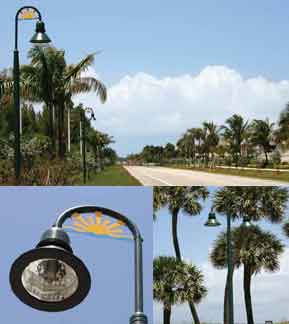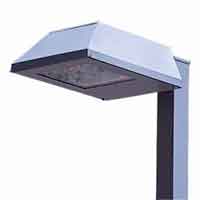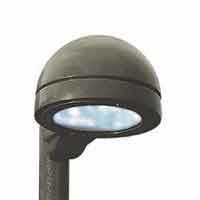|
 There are different types of highway lights for different purposes. The best luminaires are those made in the USA because and sold through single-source commercial lighting vendors like RLLD Commercial Lighting, whose design teams can assist municipalities in the planning, configuration, and outsourced installation of their highway lighting systems. There are different types of highway lights for different purposes. The best luminaires are those made in the USA because and sold through single-source commercial lighting vendors like RLLD Commercial Lighting, whose design teams can assist municipalities in the planning, configuration, and outsourced installation of their highway lighting systems.
Roadway Sign Lights
Sign lights are mounted on signs above the roadway. Metal channels support brackets that hold the fixtures in place. These channels are positioned so they can easily accommodate the mounting bolts from the back of the sign light. Regulations mandate that the distance between each lighting support channel be 7 inches. Luminaires are mounted by physically placing them on these channels.
Sign lights must also be connected to a phase conductor and a neutral conductor that cooperate to balance electrical load. Regulations must be strictly followed in the connection of both the phase conductor and the base of the sign light.
To meet both electrical requirements and light fixture requirements, you need a vendor like RLLD Commercial Lighting that has a thorough knowledge of regulations, a multitude of American made fixture options, and the ability to calculate complex mathematical models for the appropriate distribution of power.
 Highway Lights for Underpasses Highway Lights for Underpasses
These light fixtures go on the vertical sides of underpass structures. They are often suspended from pendants that are supported by struts and clips that fasten to the beams. Sometimes they require separately mounted ballasts to be installed in close proximity to the fixtures. They could even require galvanized pendant pipe assemblies or silicone caulking applied to threads during pendant assembly.
To have options like this, and to have them work reliably for your highway lighting project, you will need to work with a vendor that can offer you all of these multiple accessory options so that the highway lighting requirements in your area are met according to regulations.
 High Mast Light Poles High Mast Light Poles
The most important thing to remember here is to accurately aim the luminaries according to regulations and design plans. This is not as rudimentary as it may sound. Both luminance (light reflected off of an object) and illuminance (light that shines on an object) must be taken into account here.
If the two are not perfectly balance, negative contrast results, and the background behind oncoming cars appears more brightly lit than the cars themselves. This causes dangerous driving conditions.
This is why regulations call for the aiming of highway lights to be shown on plans. The question is, where do you plan to get these plans, and how do you know these plans will work effectively for your contract installer?
Photometric Plans and Three-Dimensional Models for Highway Light Installation
To make sure that you have considered all appropriate equipment options, correctly calculated lighting vectors and foot candle spreads, and properly documented your plans per state and federal codes, you obviously need more than blueprints.
These days, with the massive overhaul of our highway systems underway, the best route for you to take is to invest in a photometric design that will calculate all mathematics, create schematics, and also model your new highway lighting systems in a 3D rendering that shows exactly what the outcome will look like. Accessories will be itemized, angles of incidence noted, and all regulated identification numbers documented accordingly.

RLLD Commercial Lighting will provide you with all of this, and we will reimburse you the cost of the design if and when you decide to purchase your highway lights from us.
RLLD Commercial Lighting carries a wide variety of industrial & commercial lighting fixtures. If you can not find what you are looking for call us toll free at 1-866-654-3961 and we will find it for you. Our home office is located in Houston, Texas with warehouses located throughout the United States that enable us to service all 50 states.
|